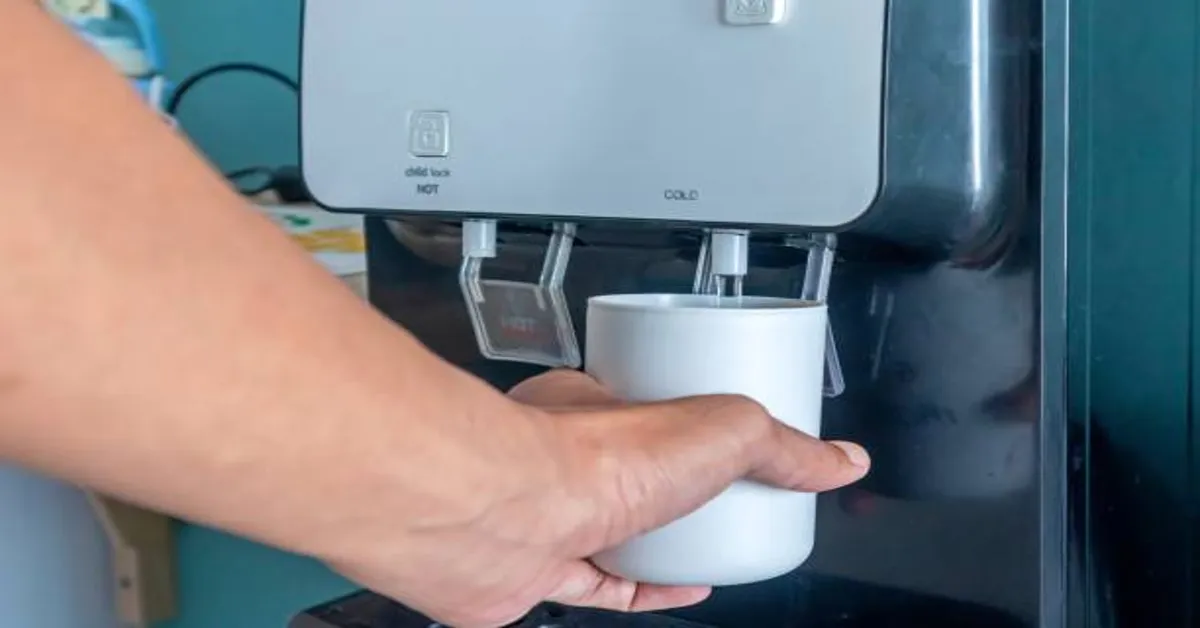In the landscape of health, wellness, and alternative approaches to hydration and detoxification, one name that frequently surfaces is the Kangen Water Machine. Over the last two decades, this machine has generated significant attention across the world, with passionate advocates swearing by its health benefits and skeptics questioning its efficacy. Despite polarized opinions, the conversation around Kangen water machines has been consistent, particularly in households focused on wellness and natural health solutions.
The Kangen Water Machine is marketed as a device that transforms regular tap water into “Kangen Water”—a form of alkaline water believed to possess antioxidant-rich, detoxifying, and pH-balancing properties. It has become especially popular among wellness influencers, natural health practitioners, fitness experts, and even in some clinical environments. But what exactly is a Kangen Water Machine? How does it work? And more importantly, do its claimed benefits hold any practical value in everyday health? This comprehensive article delves deeply into every aspect of the Kangen Water Machine, including its mechanism, benefits, concerns, usage, cost, and tips for consumers thinking of investing in one.
What is a Kangen Water Machine?
A Kangen Water Machine is a home-based water ionization device developed and distributed by Enagic, a Japanese company that has been manufacturing water-based technology for decades. The word “Kangen” in Japanese translates to “return to origin,” and the premise of this machine is to restore water to its most natural, healthful state by altering its pH level and molecular structure. The machine connects to a standard kitchen faucet and uses a process called electrolysis to split incoming tap water into two separate streams: alkaline water (considered drinking water) and acidic water (often used for cleaning or skincare).
The machine offers users the ability to select different pH levels for water, ranging from strongly acidic to highly alkaline. These water variations are each labeled for specific uses—such as drinking, food preparation, skin cleansing, and even industrial cleaning. The device is more than just a simple filter; it is a sophisticated ionizer that not only purifies but also restructures water at the molecular level.
Understanding the Electrolysis Process
At the core of the Kangen Water Machine’s operation is electrolysis, a chemical process in which an electric current is passed through water containing dissolved minerals (such as calcium and magnesium), causing a separation of water molecules into acidic and alkaline streams. This is achieved through the use of platinum-coated titanium plates inside the machine.
The water flows over these plates while a low-voltage electric current is applied. As a result:
- Positive ions (acidic) are drawn to the negative electrode (cathode) and create alkaline water.
- Negative ions (alkaline) are drawn to the positive electrode (anode) and create acidic water.
This split allows the Kangen machine to output water with varying pH values—from 2.5 (strongly acidic) to 11.5 (strongly alkaline). Users can then choose their desired pH level depending on how they intend to use the water. The alkaline water is usually consumed for hydration, while the acidic water has external applications like disinfecting surfaces or treating skin conditions.
Types of Kangen Water and Their Uses
Kangen Water Machines are designed to produce multiple types of water, each categorized by a different pH level. Understanding these can help consumers use the machine more effectively.
1. Strong Alkaline Water (pH 11.0–11.5)
This water is not suitable for drinking but is ideal for cleaning and removing pesticides from fruits and vegetables. The high pH helps in emulsifying oils, making it useful in degreasing kitchen surfaces or cleaning produce.
2. Kangen Drinking Water (pH 8.5–9.5)
This is the most commonly consumed version of Kangen water. It is mildly alkaline and is believed to help with hydration, digestion, and neutralizing acidity in the body. Many users report increased energy levels and better hydration after switching from regular water to this form.
3. Neutral Water (pH 7.0)
This is filtered water with a neutral pH. It doesn’t undergo electrolysis and is typically used for preparing baby formula or taking medications, as both require a balanced pH to prevent adverse reactions.
4. Acidic Beauty Water (pH 4.0–6.0)
This slightly acidic water is often used for skincare and hair care routines, as it resembles the natural pH of human skin. Some users apply it as a toner, facial mist, or aftershave, claiming it tightens pores and promotes skin clarity.
5. Strong Acidic Water (pH 2.5)
This is used for disinfection purposes. It is said to kill bacteria, viruses, and fungi effectively. Hospitals in Japan have reportedly used it for wound care and sterilization due to its strong oxidizing potential.
Potential Health Benefits of Kangen Water
One of the key selling points of the Kangen Water Machine is its potential health benefits. While some of these are still under scientific scrutiny, advocates of alkaline water often cite several reasons why switching to Kangen water may support health:
1. Enhanced Hydration
It is believed that ionized water contains smaller water clusters, which are easier for cells to absorb. This could lead to better hydration, particularly for athletes or individuals with high physical demands.
2. Antioxidant Properties
Alkaline water is thought to contain a negative oxidation-reduction potential (ORP), which enables it to act as an antioxidant. A negative ORP implies that the water can donate electrons, thereby neutralizing free radicals in the body, which may reduce oxidative stress.
3. pH Balance in the Body
Modern diets, which are rich in acidic foods (processed meat, dairy, sugar), may contribute to bodily acidosis. Drinking alkaline water may help to counteract excessive acidity, although the body naturally regulates its pH through various mechanisms.
4. Digestive Aid
Some users report that drinking alkaline water improves digestion and helps with conditions like acid reflux, constipation, and indigestion. This may be due to the alkalinity neutralizing excess stomach acid.
5. Detoxification
Another commonly cited benefit is improved detoxification. Proponents argue that alkaline water assists the kidneys and liver in flushing out toxins more efficiently, although this is still being researched.
Cost and Maintenance Considerations
The Kangen Water Machine is considered a high-end investment in home health appliances. Depending on the model, prices typically range from $2,000 to $6,000 or more. The cost variation is due to differences in the number of electrode plates, cleaning automation, water output levels, and additional features like smart displays or self-cleaning modes.
Maintenance includes:
- Replacing the filter (usually every 6-12 months).
- Regular citric acid cleaning cycles to prevent mineral buildup on the plates.
- Ensuring the water inlet and hoses are free of blockages or sediment.
Some models offer automatic cleaning, while others require manual intervention. Prospective buyers should consider the long-term maintenance costs and responsibilities before making a purchase.
Who Should Consider a Kangen Water Machine?
A Kangen Water Machine is not a one-size-fits-all appliance. It is best suited for individuals or households that are:
- Highly health-conscious and prefer natural methods of health improvement.
- Located in areas where tap water quality is questionable.
- Seeking alternatives to bottled alkaline water, which may be costly in the long run.
- Willing to invest time and effort into regular maintenance and responsible usage.
However, those on a tight budget, casual users of water filtration, or individuals with no strong preference for pH-adjusted water may find traditional filters more suitable for their needs.
Controversies and Criticisms
Despite the enthusiastic user base, Kangen Water Machines have not escaped scrutiny. Critics argue that many of the health claims are exaggerated or unsupported by robust scientific studies. For example:
- The human body already has natural systems (like the kidneys and lungs) to maintain its internal pH, making the effect of drinking alkaline water relatively limited.
- ORP readings are often misunderstood by lay users and can vary based on water source and storage conditions.
- Some opponents believe that the business model (multi-level marketing) skews perception, as many promoters are also sellers with financial incentives.
These criticisms suggest the need for individual research and consultation with healthcare professionals before making long-term health decisions based on water alone.
Tips for First-Time Buyers
For those who decide that the Kangen Water Machine aligns with their lifestyle and health goals, here are a few practical tips:
- Research different models based on your needs and budget. The most expensive isn’t always the most necessary.
- Buy directly from the company or a certified distributor to avoid counterfeit machines.
- Ask for a demonstration, if possible, to understand how to operate and clean the machine.
- Start with a lower pH level when drinking alkaline water and gradually work up, especially if you are new to pH-modified water.
- Record your observations in terms of digestion, energy, or skin quality, so you can make informed judgments about its effect on your body.
Final Thoughts
The Kangen Water Machine is a sophisticated appliance built around the idea that water can do more than just hydrate—it can heal, detoxify, and balance the body when structured properly. While its benefits are widely discussed and passionately endorsed by many, it’s essential to approach such claims with a combination of curiosity and skepticism. The technology behind the machine is real and intriguing, and for many, it represents a valuable investment in health. However, results can vary based on individual physiology, existing health conditions, and overall lifestyle.
As with any wellness product, it should not be seen as a miracle cure, but rather as a supportive tool within a broader framework of good nutrition, exercise, mental well-being, and medical care. Whether you decide to buy a Kangen Water Machine or not, understanding how it works and what it offers can empower you to make informed decisions about your health and hydration needs.
FAQs About Kangen Water Machines
1. What is the main difference between Kangen water and regular filtered water?
Kangen water is ionized through electrolysis, giving it altered pH levels and claimed antioxidant properties, unlike standard filtered water that only removes contaminants.
2. Can drinking Kangen water help with weight loss or detox?
While some users report improved digestion and energy, there’s no medical consensus that Kangen water directly causes weight loss. It may aid hydration, which is essential for metabolism.
3. How often does the Kangen Water Machine need maintenance?
Most machines need filter replacement every 6-12 months and occasional citric acid cleaning. Proper maintenance ensures longevity and effectiveness.
4. Is it safe for children and pets to drink Kangen water?
Mildly alkaline Kangen water (pH 8.5–9.5) is generally considered safe for healthy individuals, including children and pets, but it’s best to start with neutral water and consult a vet or pediatrician if needed.
5. Why is the Kangen Water Machine so expensive compared to other filters?
The cost reflects its advanced ionization technology, durable platinum-titanium plates, and multi-level water options, distinguishing it from basic filters that only purify without pH adjustment.









